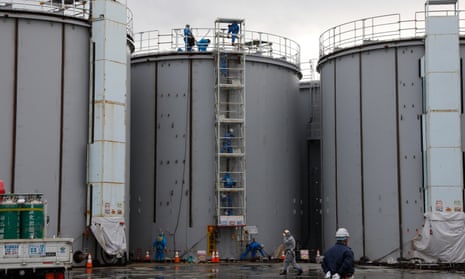Japan is considering building next-generation nuclear reactors and restarting idled plants in a major policy shift, 11 years after the triple meltdown at the Fukushima Daiichi nuclear power plant rocked the country’s dependence on atomic energy.
The prime minister, Fumio Kishida, said he had directed a government panel to look into how “next-generation nuclear reactors equipped with new safety mechanisms” could be used to help Japan achieve its goal of carbon neutrality by 2050. His “green transformation” council is expected to report back by the end of the year, he said on Wednesday.
The change of direction, which could include extending the lifespan of existing reactors, have highlighted Japan’s struggle to secure a stable energy supply as a result of the war in Ukraine and soaring energy costs.
Successive governments have been forced to lower Japan’s dependence on nuclear since the March 2011 disaster, when a powerful tsunami destroyed Fukushima Daiichi’s backup electricity supply, causing three of its six reactors to suffer meltdowns.
Most of Japan’s nuclear plants have remained idle ever since, while the government said it would not build new reactors or replace ageing reactors, fearing a public backlash.
If realised, Kishida’s plans would mark a dramatic reversal of that stance.
“Russia’s invasion of Ukraine has vastly transformed the world’s energy landscape … Japan needs to bear in mind potential crisis scenarios,” he said at an energy policy meeting this week.
“To overcome an imminent crisis caused of a power supply crunch, we must take the utmost steps to mobilise all possible policies in the coming years and prepare for any emergency.”
The economy and industry minister, Yasutoshi Nishimura, said it was “extremely important to secure all options to redesign a stable energy supply for our country. From that perspective, we will also consider all options regarding nuclear power.”
Kishida conceded that the government would have to win support from the public, which turned against nuclear power in the wake of the Fukushima meltdown. Officials believe voters have become more receptive to nuclear power due to rising fuel costs and after an energy crunch in Tokyo during a recent heatwave. The country is heavily dependent on imported fossil fuels.
“It is the first step towards the normalisation of Japan’s energy policy,” said Jun Arima, a project professor at the Tokyo University’s graduate school of public policy.
Seven reactors are currently in operation, with three others offline for regular safety inspections. Dozens of others are still going through a relicensing process under stricter safety standards introduced after the 2011 disaster, which some experts blamed on the “nuclear village” of operators, politicians and regulators.
A bigger role for nuclear in Japan’s energy mix could see seven additional reactors being restarted after next summer, including two at Kashiwazaki-Kariwa, the biggest nuclear plant in the world. Restarting the plant would be particularly controversial, since it is run by Tokyo Electric Power, the same company that operates Fukushima Daiichi.
The 2011 disaster sent huge quantities of radiation into the atmosphere and forced tens of thousands of people to flee their homes. Some areas near the plant remain off-limits, while others have only recently reopened to residents.
The government will also consider extending the lifespan of existing reactors beyond the legal limit by excluding the period they remained shut down – in some cases several years – when calculating their operating time.
Plants can operate for up to 40 years in principle, but can continue generating electricity for another 20 years if they undergo safety upgrades and pass screenings conducted by regulators.
Japan has set a target for nuclear power generation to account for 20-22% of its electricity supply in 2030. Before the Fukushima meltdowns, about a third of its power generation came from nuclear, but in 2020 the figure was less than 5%.
Wires contributed reporting
